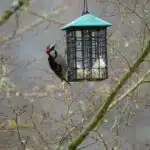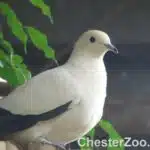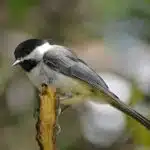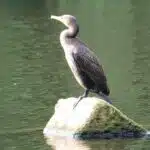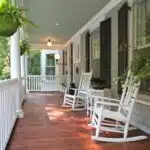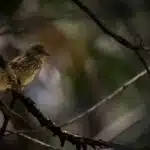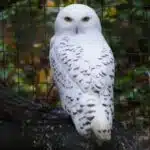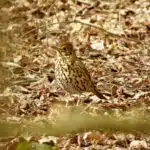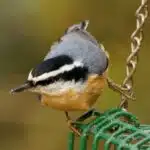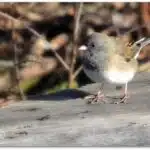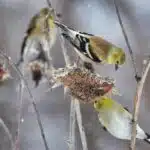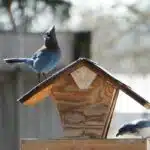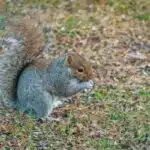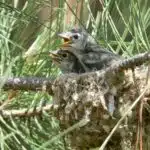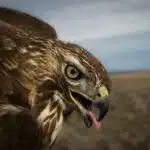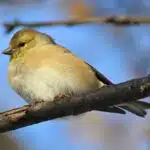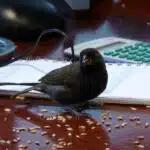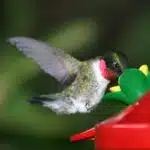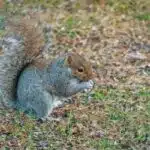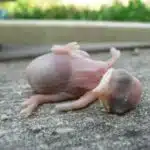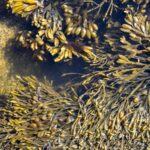The Purple Martin is a bird species that has long captured the attention of bird enthusiasts and conservationists alike. These birds are not only beautiful to behold, with their vibrant purple feathers and graceful flight patterns, but they also serve an important ecological role as insectivores. Unfortunately, due to habitat loss and competition from non-native bird species, Purple Martins have experienced declining populations in recent years.
However, there are steps that individuals can take to help attract Purple Martins to their yards and support their conservation. By providing suitable nesting sites, food sources, and taking steps to reduce pesticide use in your yard, you can create a welcoming environment for these magnificent birds. In this article, we will explore the biology and behavior of the Purple Martin, as well as practical tips for attracting them to your yard and contributing to their conservation efforts.
The Biology And Behavior Of Purple Martins
Purple martins are a species of swallow commonly found across North America. Understanding their migration patterns is crucial to attracting them to your yard. These birds spend their winters in South America and migrate north to breed during the summer months.
While they are solitary during migration, purple martins exhibit social behavior in breeding colonies. They often nest together in large groups, and males will compete for prime nesting spots to attract females. This competition can result in aggression among males, but overall these colonies provide a safe haven for the birds to raise their young.
To successfully attract purple martins to your yard, it is important to understand their biology and behavior. By providing an appropriate habitat that mimics their natural environment, you can create an ideal breeding ground for these beautiful swallows. In the following section, we will delve deeper into understanding the habitat needs of purple martins and how you can create a welcoming environment for them in your own backyard.
Understanding The Habitat Needs Of Purple Martins
As we learned in the previous section, purple martins are fascinating birds with complex biology and social behavior. Understanding these intricacies is key to attracting them to your yard. However, it is equally important to understand their nesting habits and migration patterns.
Purple martins are colonial nesters, meaning they prefer to live in large groups in communal housing such as birdhouses or gourds. They also have specific preferences for the size and shape of their nesting cavities, which can vary depending on the region they inhabit. By understanding these needs, you can create the ideal habitat for them to thrive in your yard.
Migration is another crucial factor to consider when attracting purple martins. These birds have one of the longest migratory routes of any North American songbird, flying from South America all the way to their breeding grounds in North America each spring. Providing a safe and comfortable haven for them during this journey is essential for their survival.
Understanding nesting habits and migration patterns are just two pieces of the puzzle when it comes to attracting purple martins. In the next section, we will explore how to choose the right nesting site for these birds and create an inviting environment that meets all their needs.
Choosing The Right Nesting Site
The purple martin is a bird species known for its aerial acrobatics and exceptional insect-catching abilities. These birds require specific nesting sites to ensure their survival, making it essential to choose the right location when trying to attract them to your yard. The following are some factors you should consider when selecting a nesting site.
Choosing location: Purple martins prefer open areas with unobstructed views of the sky. They also tend to avoid areas with tall trees and buildings that can block their flight paths. It would be best if you chose an open, sunny area in your yard, away from any potential obstacles.
Attracting mates: Purple martins are social birds that prefer to nest in groups or colonies. To attract them to your yard, you must provide multiple nesting options. A good starting point is setting up at least three or four martin houses in your chosen location. Be sure to position these houses at least 30-40 feet apart from each other.
Providing adequate protection: Predators such as snakes, raccoons, and squirrels pose a threat to purple martin eggs and hatchlings. It would help if you considered installing predator guards around each of the martin houses to prevent these animals from climbing up the poles.
Choosing the right nesting site is crucial when trying to attract purple martins to your yard. By selecting an open and sunny location with enough space for multiple nests and providing adequate protection against predators, you increase your chances of creating a safe haven for these remarkable birds. In the next section, we will discuss how selecting the best nesting boxes can further enhance your ability to attract purple martins to your yard.
Selecting The Best Nesting Boxes
Design options and material selection are crucial when choosing the best nesting boxes for attracting purple martins to your yard. The size, shape, and color of the box can impact the attractiveness to these birds, as well as the material used for construction. It is important to choose a box that will provide a safe and comfortable environment for these birds, while also being durable enough to withstand weather conditions.
When selecting a design for your nesting box, consider the size and shape of the entrance hole. Purple martins prefer a round entrance hole that is 2 inches in diameter. Additionally, they prefer a nesting box that is at least 6 inches by 6 inches in size with an interior height of 8-12 inches. The color of the box should be white or light-colored to reflect heat during hot summer months.
Material selection is also important when choosing a nesting box. A high-quality wooden box made from cedar or cypress provides durability against weather conditions and pests, while also providing insulation for temperature regulation inside the box. Plastic boxes are another option but may not provide adequate insulation and can become too hot during summer months.
Choosing the right design and material for your purple martin nesting boxes can greatly increase their chance of attracting these birds to your yard. In the next section, we will discuss how to properly install and maintain these nesting boxes to ensure their longevity and continued success in attracting purple martins.
Installing And Maintaining Nesting Boxes
To attract purple martins to your yard, installing and maintaining nesting boxes is crucial. These boxes serve as a safe haven for the birds to lay their eggs and raise their young without fear of predators. DIY construction of these nesting boxes is a great way to save money while also providing a suitable habitat for the birds. A simple design consists of an enclosed box with multiple compartments, each with its own entrance hole.
After constructing your nesting boxes, it’s important to keep up with seasonal maintenance. Before the breeding season begins, clean out all old nesting material from the previous year and disinfect the inside of the box to prevent disease and parasite buildup. During the breeding season, regularly check on the nests to ensure they are in good condition and monitor for any predator activity around the area.
By installing and maintaining nesting boxes in your yard, you are not only providing a home for purple martins but also contributing to their conservation efforts. In order to fully support these birds, however, it’s important to provide additional food and water sources. This will be discussed in more detail in the subsequent section.
Providing Food And Water Sources
Creating habitats that mimic the natural environment of purple martins is key to attracting them to your yard. These birds prefer open areas near bodies of water, such as lakes or streams. By providing these types of habitats, you can help attract purple martins to your yard. Additionally, you can plant trees and shrubs that provide shade and shelter for these birds.
Providing shelter is another important factor in attracting purple martins. You can do this by installing birdhouses specifically designed for them. These houses should be at least 10-12 feet off the ground and have multiple compartments to accommodate their social nature. It’s also important to monitor the birdhouses regularly to ensure they are not being taken over by invasive species.
In addition to creating habitats and providing shelter, it’s crucial to provide food and water sources for purple martins. They primarily feed on insects, so having a bug-friendly garden with plenty of flowers and plants can help attract their food source. You can also install a birdbath or fountain for water, which will not only provide drinking water but also benefit other bird species in your yard. By providing these essential resources, you can create an environment that purple martins will want to call home.
Transition: Now that you’ve created an inviting habitat with ample shelter and food sources for purple martins, it’s important to consider natural pest control methods that won’t harm these beneficial birds.
Natural Pest Control Methods
As we strive to create an ideal environment for our feathered friends, it’s important to consider natural pest control methods. Companion planting is a technique where certain plants are grown together in order to naturally deter pests. For example, marigolds can be planted near vegetables to repel nematodes and other harmful insects. This method not only helps protect your plants but also provides a diverse habitat for beneficial insects.
Beneficial insects such as ladybugs, lacewings, and praying mantises play an important role in controlling garden pests. These insects feed on aphids, mites, and other harmful insects that can damage plant growth. By attracting these helpful creatures through the use of flowering plants and beneficial habitats like insect hotels, you can create a balanced ecosystem in your yard.
By utilizing natural pest control methods like companion planting and attracting beneficial insects, we can reduce our reliance on harmful pesticides. Not only does this benefit the environment by reducing chemical exposure, but it also creates a healthier habitat for birds and other wildlife. In the next section, we will explore additional ways to reduce pesticide use in your yard while still maintaining a thriving landscape for purple martins and their fellow feathered friends.
Reducing Pesticide Use In Your Yard
Pesticides are widely used to eliminate pests that can damage crops and property. However, the excessive use of pesticides has resulted in negative impacts on wildlife populations worldwide. Birds, especially insectivorous species like purple martins, are particularly vulnerable to pesticide exposure. As a result, reducing pesticide use in your yard can benefit not only birds but also other wildlife.
Alternative methods to reduce pest infestation in your yard include integrated pest management (IPM) practices. IPM involves the use of a combination of techniques such as cultural controls, biological controls, and physical controls to manage pests effectively. Cultural methods include crop rotation and selecting plants that are resistant to common pests. Biological control involves introducing natural predators such as ladybugs or praying mantises that eat harmful insects. Physical methods involve using barriers or traps to prevent pests from entering your garden.
Reducing the use of pesticides also has several benefits for wildlife populations beyond just purple martins. Pesticides can contaminate soil and water sources, leading to the death of beneficial insects like bees and butterflies that pollinate flowers and crops. Additionally, some pesticides can accumulate in the food chain, affecting larger animals like birds of prey. By using alternative pest control methods or reducing pesticide use altogether, you can create a healthier environment for all kinds of wildlife.
As we have seen, reducing pesticide use is essential for maintaining healthy bird populations like purple martins in your yard. However, it is not just about protecting one species; it is about creating a more sustainable ecosystem for all living creatures. In the next section, we will discuss how monitoring purple martin populations can help scientists better understand their behavior and needs to ensure their continued survival in North America’s changing landscapes.
Monitoring Purple Martin Populations
Population trends of Purple Martins can provide valuable information on the species’ health and help conservation efforts. Over the years, these birds have experienced both positive and negative population trends. In some regions, populations have increased due to conservation efforts such as providing breeding habitats and reducing pesticide use. However, in other areas, populations have declined due to habitat loss and degradation, predation, and competition for nesting sites.
Threats and challenges faced by Purple Martins can also impact their populations. One significant threat is habitat loss caused by land development that destroys breeding habitats. Other factors such as extreme weather events, pollution, disease outbreaks, and predation can also affect these birds’ survival rates. Furthermore, increased competition with non-native bird species for nesting sites can reduce their chances of successfully reproducing.
To ensure the long-term conservation of Purple Martins, monitoring their populations is crucial. Citizen science projects that involve reporting sightings of these birds are an essential source of data for researchers studying population trends. By participating in such projects, individuals can contribute to the understanding of the species’ distribution and abundance in different regions. Additionally, citizen science initiatives provide opportunities for people to learn about bird biology and conservation while actively contributing to scientific research.
Reporting Sightings And Participating In Citizen Science Projects
As we discussed in the previous section, monitoring Purple Martin populations is crucial for understanding their behavior and population trends. However, attracting these birds to your yard is equally important for conservation efforts. Here are some tips to help you attract Purple Martins:
Firstly, provide suitable housing. Purple Martins nest in colonies, so providing multi-compartment birdhouses or gourds can be attractive to them. Ensure that the entrance holes are large enough for martins but small enough to keep out other birds and predators. Secondly, provide a source of water, such as a birdbath or fountain. Lastly, avoid using pesticides on your lawn or garden as they can harm birds and their food sources.
Joining surveys and sharing data with citizen science projects can also contribute significantly to conservation efforts. Many organizations conduct surveys and collect data on bird populations across regions. Participating in these surveys can help researchers understand the distribution and abundance of Purple Martins and other avian species.
By supporting conservation organizations, you can help ensure long-term protection for Purple Martins and other bird species. These organizations work tirelessly to preserve habitats, conduct research on threatened species, advocate for legal protection of wildlife, and educate the public about conservation issues. Consider donating your time or resources to support these organizations’ efforts towards preserving our natural heritage for future generations.
Supporting Conservation Organizations
Attracting purple martins to your yard is not just about creating a beautiful view, but it also contributes to the conservation of this species. According to the North American Breeding Bird Survey, purple martin populations have declined by 49 percent from 1966 to 2014. The reasons for this decline are mostly due to habitat loss and competition with invasive species. However, collaborating with and supporting local conservation organizations can help reverse this trend.
One way of supporting local conservation organizations is through donations. These organizations rely on funding from individuals and corporations to continue their conservation efforts. Donations can help in many ways, such as funding research projects, purchasing new equipment, or even building new nesting sites for purple martins. Additionally, volunteering your time and skills can be another way of supporting these organizations. You could help with bird surveys, data entry, or even assist in educational programs.
Another important aspect of collaborating with local conservation organizations is staying informed about current issues affecting purple martin populations. These groups often provide updates on breeding trends, migration patterns, and other relevant information that can help you better understand how to support these birds. Additionally, they may offer workshops or training sessions on how to properly maintain nesting sites or avoid potential threats like predators or parasites.
By collaborating with and supporting local conservation organizations, we can make a difference in preserving the population of purple martins. Donating our time and resources can contribute significantly to their efforts while staying informed helps us better understand how to support these birds. In the next section, we will discuss how education plays an essential role in attracting purple martins to your yard.
Educating Others About Purple Martins
Purple Martins are social birds that prefer to nest in colonies, requiring appropriate housing for successful breeding. The ideal habitat for Purple Martins comprises of open grasslands, fields, and bodies of water, such as lakes, ponds, and rivers. These birds prefer to nest in man-made housing, such as gourds, birdhouses, and apartment-style structures. The nesting habits of Purple Martins involve building a nest of twigs, grass, and feathers that is lined with soft materials such as hair or fur. Purple Martins begin to migrate south in late summer and early fall, with most birds arriving in their wintering grounds in Southern Brazil by November.
Habitat Requirements
Creating a welcoming habitat for purple martins is an essential step in attracting these magnificent birds to your yard. These birds need large open spaces with plenty of flying insects, so creating landscapes that provide both cover and food will be crucial. Purple martins prefer nesting sites that are located near water sources such as lakes or rivers, and they also enjoy being close to human activity.
Providing shelter is another important factor in attracting purple martins to your yard. These birds rely on man-made structures such as birdhouses or gourds for nesting, so it’s important to ensure that these structures are placed in a safe location away from predators. Additionally, providing multiple nesting options will increase the chances of attracting a larger colony.
In conclusion, creating a suitable habitat for purple martins requires careful planning and attention to detail. By incorporating elements such as creating landscapes and providing shelter into your backyard design, you can attract these wonderful birds to your yard while simultaneously serving the needs of nature. With time and patience, you may even be able to establish a thriving colony of purple martins in your very own backyard!
Nesting Habits
Understanding breeding behaviors and nesting habits of purple martins is crucial for anyone interested in attracting these birds and promoting their conservation. Purple martins are colonial nesters, meaning they prefer to nest in groups or colonies rather than individually. This behavior is advantageous for several reasons, including better protection against predators, more efficient use of nesting sites, and increased mating opportunities.
Nestling development stages are also important to consider when providing suitable habitats for purple martins. These birds have a relatively long breeding season, which can begin as early as February and extend into August. During this time, adult purple martins will lay eggs and raise their young in communal nests made from grasses and twigs. The hatchlings will remain in the nest for an average of 26-32 days before fledging.
To promote the conservation of purple martins, it’s essential to educate others about their unique breeding behaviors and nesting habits. By understanding these factors, individuals can create suitable habitats that provide the necessary resources for successful reproduction while also ensuring the safety of these magnificent birds. Whether you’re a homeowner interested in setting up a birdhouse or a wildlife conservationist working to protect local populations, educating others about the needs of purple martins is an essential step towards fostering their conservation.
Migration Patterns
Understanding the migration patterns of purple martins is another crucial aspect of their conservation. These birds are known for their long-distance migrations, which can cover thousands of miles. Researchers have used tracking devices to understand the movements of purple martins during these migrations, which typically occur twice a year. By tracking the movements of these birds, researchers can better understand the challenges they face during migration and develop strategies to protect them.
One significant challenge that purple martins face during migration is habitat loss. Many of the areas where these birds stop to rest and refuel on their journey have been destroyed or degraded due to human activities such as deforestation and urbanization. Educating others about the importance of preserving habitats along migratory routes is essential for protecting these birds.
By understanding migration patterns and tracking movements, individuals can help promote the conservation of purple martins by creating suitable habitats along their migratory routes. This includes providing nesting sites in both breeding and non-breeding areas, as well as ensuring that stopover sites contain sufficient food sources and shelter. Educating others about these needs is crucial for fostering an understanding of the challenges faced by purple martins during migration and promoting their conservation efforts.
Common Challenges And Solutions For Attracting Purple Martins
Attracting purple martins to your yard can be a challenging task, as these birds have specific nesting requirements. One of the main challenges in attracting purple martins is managing competition from other bird species. Purple martins prefer large, multi-compartment houses that are placed in open areas away from trees or other tall structures that may provide perches for predators.
To reduce competition among bird species, it is important to provide enough housing for all the birds in your area. This means that you may need to install multiple martin houses, as well as additional housing for other bird species. It is also important to monitor the activity around your martin houses to ensure that they are not being taken over by other bird species.
Another challenge in attracting purple martins is handling predators. Martin houses can attract a variety of predators, including snakes, raccoons, and squirrels. To protect your martin houses from predators, it is recommended to install predator guards on the poles or posts supporting the housing. Additionally, you can place sticky substances or barriers around the entrance holes to prevent climbing predators from reaching the nests.
Managing competition and handling predators are two important considerations when attracting purple martins to your yard. By providing adequate housing and protecting your martin houses from predators, you can increase your chances of successfully attracting these beneficial birds to your property. In the next section, we will discuss other bird species that may also benefit from your efforts in creating a welcoming habitat for wildlife.
Other Bird Species That May Benefit From Your Efforts
With the challenges and solutions in mind, attracting purple martins to your yard can be a rewarding experience. These birds are remarkable creatures with their unique purple plumage and chirping melodies. It’s like having a living symphony in your backyard. Now that you’ve done the work, it’s time to sit back and enjoy watching these beautiful birds soar through the sky.
While focusing on attracting purple martins is essential, creating habitats for other bird species in your area should also be considered. Other bird species may also benefit from the same types of housing structures used for purple martins, such as bluebirds or wrens. Providing food sources, fresh water, and shelter can attract a variety of birds to your yard.
To make your yard an oasis for winged creatures, you can start by planting native trees and plants that offer food sources such as berries or nectar. You can also install bird feeders and birdbaths to provide nourishment and water for different bird species. Lastly, avoid using pesticides or chemicals that may harm birds’ health or kill off their food sources.
Birdwatching is a joyful activity that brings people closer to nature conservation efforts. Celebrating the joy of birdwatching and nature conservation doesn’t have to stop at your backyard; it can extend beyond that into community efforts to preserve natural habitats that support diverse bird populations. By working together with others who share this passion, we can ensure that future generations will continue to experience the beauty of observing these magnificent creatures in their natural environments.
Celebrating The Joy Of Birdwatching And Nature Conservation
Birdwatching is a fulfilling activity that allows us to connect with nature and observe the beauty of our avian friends. It offers an opportunity to appreciate the natural world and learn about different bird species, their behaviors, and habitats. One way to enhance this experience is through nature photography, which not only captures stunning images of birds but also helps raise awareness about conservation efforts.
Birding communities are a great resource for those interested in birdwatching and nature conservation. These groups provide opportunities to meet like-minded individuals who share a passion for birds and the environment. They offer educational programs, field trips, and workshops that allow members to learn from experts and improve their birdwatching skills.
Conservation efforts are crucial in protecting bird populations from habitat loss, climate change, and other threats. By attracting birds to our yards with feeders, birdhouses, or water sources such as birdbaths or ponds, we can create safe spaces for them to thrive. In doing so, we contribute to the overall health of our local ecosystems and help preserve these beautiful creatures for generations to come.
Nature photography and birding communities are just a few ways we can celebrate the joy of birdwatching while promoting nature conservation. By taking part in these activities, we not only enrich our lives but also help protect the environment around us. Let us continue to appreciate the beauty of birds while striving towards a sustainable future for all species on Earth.
Conclusion
The purple martin is a fascinating bird species that is known for its aerial acrobatics and social behavior. Understanding the biology and habitat needs of these birds is crucial to attract them to your yard. By providing suitable nesting sites and maintaining them properly, you can create a welcoming environment for purple martins.
To attract purple martins, it is important to educate others about the benefits of these birds and the challenges they face. Encouraging others to take conservation measures can help protect this species and other vulnerable bird populations. It is also worth noting that attracting purple martins can benefit other bird species as well, as their presence can deter predators and provide competition for resources.
In conclusion, attracting purple martins to your yard requires careful consideration of their habitat needs and proper maintenance of nesting sites. By educating others about the importance of these birds, we can all play a role in conserving our natural world. Whether you are an experienced birder or just starting out, observing these fascinating birds in action is sure to bring joy and wonderment to your life.
Image Credits
- “Fly Purple Martin Fledglings!” by OakleyOriginals (featured)


